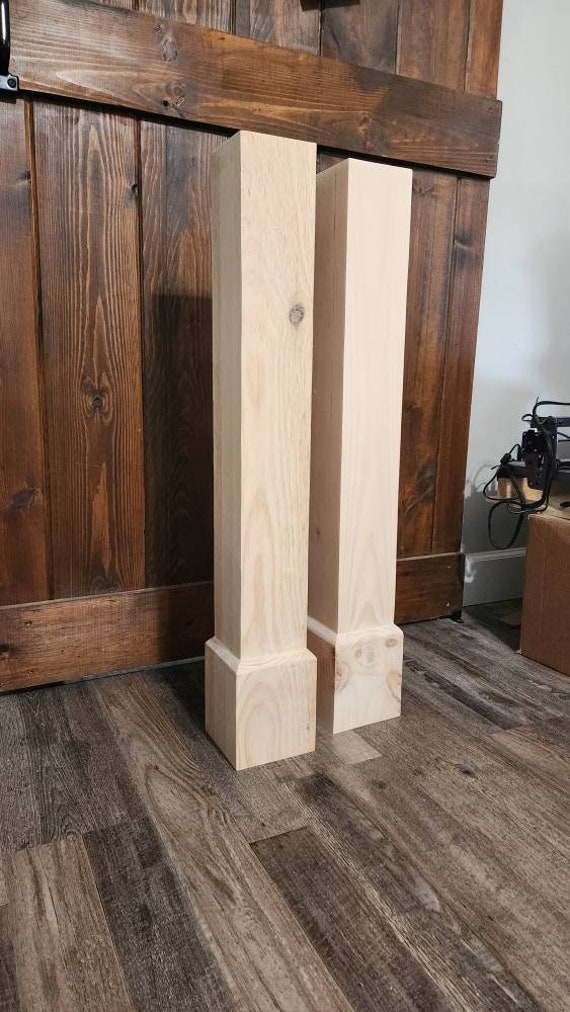The Top Kitchen Island Leg Styles to Complement Any Kind Of Design Aesthetic
The Top Kitchen Island Leg Styles to Complement Any Kind Of Design Aesthetic
Blog Article
The Significance of a Sturdy Cooking Area Island Leg in Creating a Practical Food Preparation Location
A durable kitchen island leg serves as a fundamental component in establishing a functional food preparation atmosphere, supplying required support for both the kitchen counter and numerous kitchen area tasks. As kitchen areas develop right into multifunctional locations for food preparation, dining, and socializing, the selection of products and design considerations for island legs comes to be significantly crucial.
Benefits of Sturdy Island Legs
Giving important assistance, sturdy kitchen island legs play a crucial function in enhancing the capability and longevity of kitchen islands - kitchen island leg. These legs not only birth the weight of the countertop and any kind of additional things positioned on the island, yet likewise contribute to the total stability of the framework. A well-supported kitchen area island makes sure that it remains functional and upright, also under heavy usage, which is especially vital in active kitchen settings
Additionally, sturdy island legs can improve the visual appeal of the cooking area. They provide a strong structure that can enhance various design styles, from modern-day to traditional. This flexibility permits property owners to customize their kitchen area islands according to individual preference while guaranteeing that the architectural honesty stays uncompromised.
In enhancement to their encouraging duty, robust kitchen area island legs can likewise enhance safety and security. Eventually, spending in durable kitchen island legs is vital for a practical and visually pleasing cooking location.
Products for Kitchen Area Island Legs
When choosing materials for kitchen area island legs, durability and visual charm are vital elements to think about. The most usual products consist of hardwood, steel, and engineered wood, each offering one-of-a-kind benefits.
Hardwood, such as oak, cherry, or maple, is a classic selection because of its strength and classic charm (kitchen island leg). It can endure substantial weight and is immune to wear, making it ideal for high-use cooking area settings. Furthermore, hardwood can be discolored or painted to match different kitchen designs
Metal legs, frequently crafted from stainless-steel or wrought iron, give a industrial and modern-day look. They are unbelievably strong and can support significant loads while being immune to moisture and warm, which is advantageous in a cooking location. Metal legs can likewise be conveniently cleaned, improving their practicality.

Design Factors To Consider for Stability
The option of products for kitchen island legs straight influences the layout considerations for security. When making a kitchen area island, it is critical to evaluate the weight-bearing capability of the chosen materials. Larger materials, such as strong timber or metal, usually provide higher stability, specifically under the stress of everyday use.
Furthermore, the leg design need to integrate proper geometry to boost stability. A broader base increases the support location, decreasing the threat of tottering or tipping. Factor to consider must additionally be offered to the elevation of the legs; disproportionate leg sizes can bring about imbalance, jeopardizing the total stability of the island.
Additionally, the distribution of weight across the island is vital. Making certain that the leg positioning aligns with the heaviest parts, such as counter tops and devices, will additionally boost stability.
Maintenance Tips for Durability

Cleaning up is an additional important facet of maintenance. Depending upon the material of the legs-- whether timber, metal, or composite-- proper cleansing methods ought to be used. For wood legs, a mild wipe with an ideal timber and a wet cloth cleaner will assist maintain their finish. Metal legs may need a light gloss to prevent rust and preserve their appeal.
In addition, tightening up screws and screws regularly can make sure security and protect against tottering. Think about strengthening the legs with extra brackets or supports to improve sturdiness if the kitchen area island experiences heavy use. Lastly, using a safety surface or sealer can safeguard versus moisture and spots, prolonging the lifespan of the legs. By complying with these maintenance pointers, homeowners can ensure their cooking area island legs remain durable and practical for several years to come.
Picking the Right Leg Design
Normal maintenance makes sure that cooking area island legs stay strong and useful, yet picking the right leg design is similarly crucial for both aesthetic appeals and support. The option of leg style can substantially affect the general style and harmony of your kitchen.

Capability is one more important element. As an example, thicker legs or those with a sturdy base can support larger countertops and devices, improving the island's energy. On the other hand, slender legs may produce a ventilated look, suitable for lighter designs but potentially less supportive.
Conclusion
In summary, the importance of tough cooking area island legs can not be overstated in the creation of a functional cooking location. These legs give important support, enhance security, and add to the total visual of the kitchen area. By very carefully choosing proper products and layouts, along with carrying out appropriate maintenance practices, the long life and performance of kitchen islands can be made sure. Eventually, buying robust island legs is basic to accomplishing a reliable and risk-free culinary environment.
A tough kitchen area island leg offers as an my sources essential component in establishing a useful food preparation atmosphere, supplying necessary assistance for both the counter top and numerous kitchen area activities.Giving vital support, strong kitchen island legs play an essential role in boosting the index functionality and durability of kitchen area islands. Ultimately, investing in durable cooking area island legs is vital for a functional and aesthetically pleasing cooking area.
Consideration must also be given to the elevation of the legs; disproportionate leg lengths can lead to discrepancy, endangering the overall security of the island.
Wood legs provide heat and a timeless look, while metal legs provide a modern and commercial feeling.
Report this page